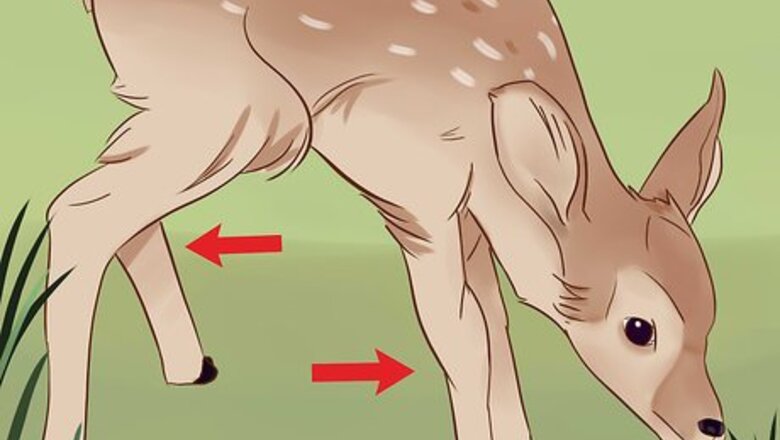
views
X
Research source
Estimating Age Based on Physical Attributes
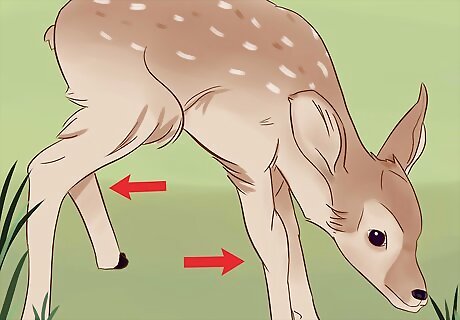
Watch for wobbly legs. Although a fawn can stand shortly after birth, they are usually quite shaky and will need to take frequent sitting breaks. This wobbliness will last until they are 3 to 4 weeks old. At that point they will be more sure-footed and less likely to fall or trip when running.
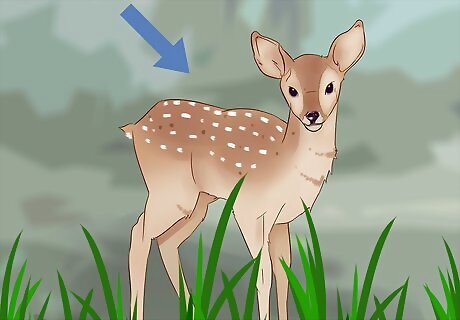
Look at their coat pattern. A newborn fawn will be reddish-brown all over. They will have a series of white spots in two rows running down each side of their back. As the fawn matures, the white spots will gradually disappear. The reddish-brown will also fade away to a grayish, thicker winter coat. In addition to the spine spots, a young fawn will also have a random assortment of white spots over the rest of its coat. Most fawns lose their spots at about 3 to 4 months of age, usually around October.
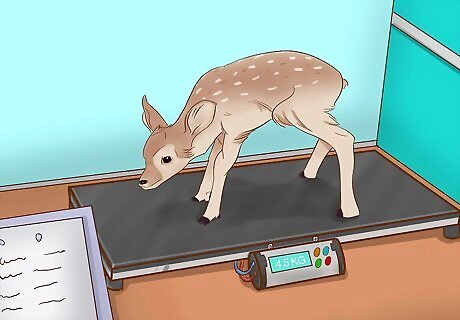
Estimate a fawn’s weight. Most fawns weigh less than 10 pounds (4.5 kg) at birth. They will steadily gain weight after birth. At around 6 months a fawn will weigh closer to 75 to 85 pounds (34 to 38.5 kg). At 1 year of age, most fawns will weigh over 90 pounds (41 kg). Looking at their body build and size will give you some idea regarding a fawn’s age. Most fawns will double their birth weight within the first 2 weeks.
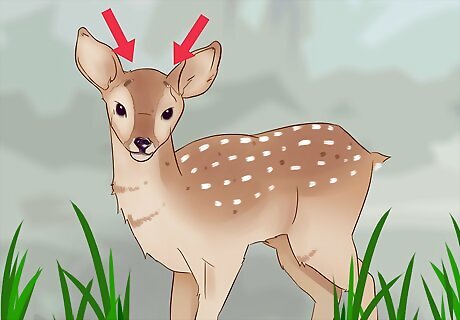
Note antler growth in buck fawns. Male fawns will start to develop pedicles or infant antlers at around 4 months old. If you look at or feel a male fawn’s head, you will see two round hardened areas. The points will be even more noticeable at around 7 months of age. Antler growth requires a great deal of energy on the part of the fawn. This is why nutritionally deficient or otherwise stressed fawns may not grow antlers until much later.
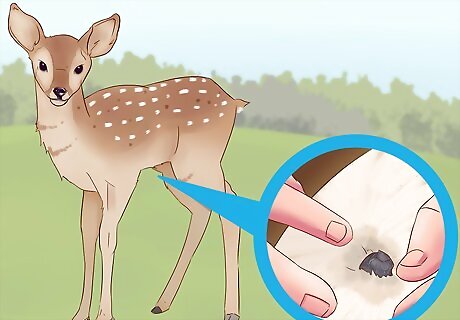
Feel for an umbilical scab. If you get close enough to a fawn to touch it, then run your hand underneath its stomach. If the fawn is less than a week old, you will feel a scab on its stomach from the umbilical cord. After a week, this scab will dry up and fall off.
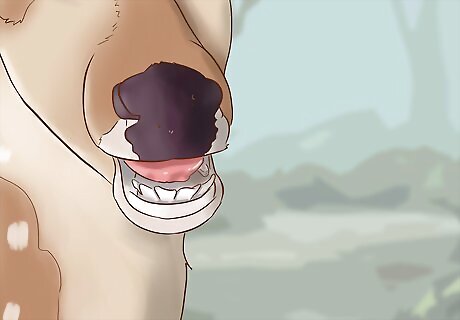
Examine their teeth. If you get a chance to open a fawn’s mouth, its teeth can tell you a great deal about its age. A fawn has 4 teeth when it is born. After 2 months, they will grow premolars and incisors. When a deer is 1.5 years old, its baby teeth will have been replaced by a full set of adult teeth.
Estimating Age Based on Behaviors
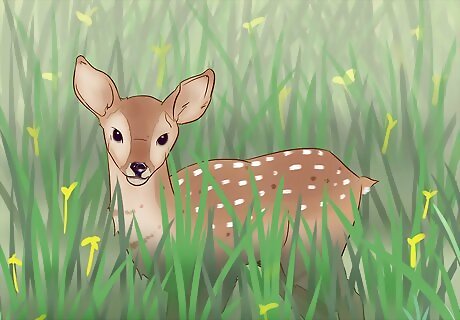
Watch for hiding behaviors. A fawn is usually able to stand less than a half-hour after being born. However, the mother deer usually keeps the fawn hidden by vegetation for up to 1 week. If you come upon a small fawn that is covered with bushes or leaves, then it was likely stashed there by the mother deer, who will return at night. Older fawns are more willing to move out in the open independently of their mother. They are also more likely to join a larger deer herd after that initial week of hiding. When a doe (female deer) has twins they usually stash each fawn in a different hiding spot. This lessens the likelihood of discovery by predators.
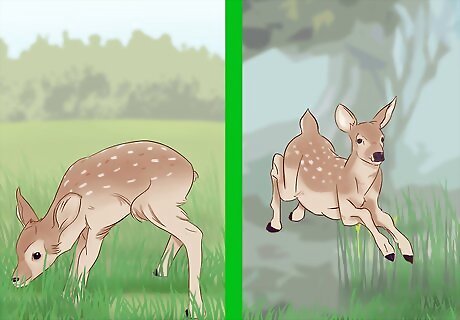
Observe freeze or flight behaviors. If you approach or startle a fawn that is less than a week old, then it is likely to simply stand there in a frozen state. It will not move, even if you come closer or try to pet it (which isn’t advised). In contrast, fawns that are a week old will flee if approached. They will exhibit a “flight” instinct.
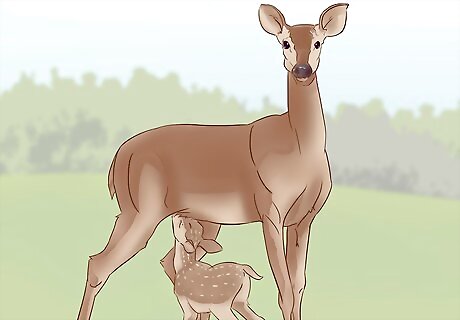
Watch for the mom to return. If you see a female deer return at night to tend to a fawn, then it is likely that the baby is less than 3 weeks old. The mom and fawn pair will continue to meet in the same spot until the baby is ready to independently seek out vegetation. At 3 weeks of age, these consistent meetings will cease, as the fawn wanders around foraging for food. This is not a foolproof system of telling a fawn’s age, however, because some fawns continue to nurse without receiving milk, as part of the mother-fawn bonding process. Fawns forage for leaves, bark, and wild fruits and mushrooms.
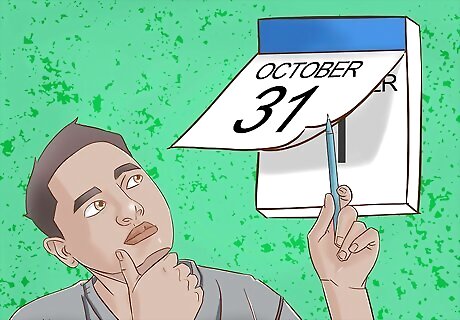
Expect births in the early spring or summer. Most deer breeds mate in the late fall from October to early December. This means that their fawns are born in the early spring and summer months. Although there are always exceptions, you are not likely to see a very young fawn in the winter months. You can also assume that a fawn you see in the summer is fairly young. Fawns that are born in the late summer or fall have a more difficult time surviving the winter months. The exception to this is in warmer climates, such as the lower U.S. South, where deer give birth on a more flexible seasonal schedule.
Caring for an Injured or Abandoned Fawn
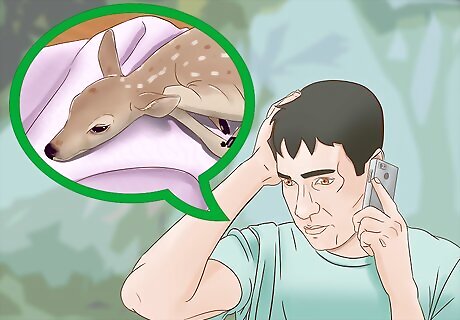
Call a wildlife rehabilitator. If you come upon a fawn that is injured or in need of medical care, contact your local parks department or search online for a wildlife rehabber near you. You can find a rehabilitator by entering your city name and “wildlife rehab” into a search engine. Most rehabbers will respond quickly if you leave a phone message.
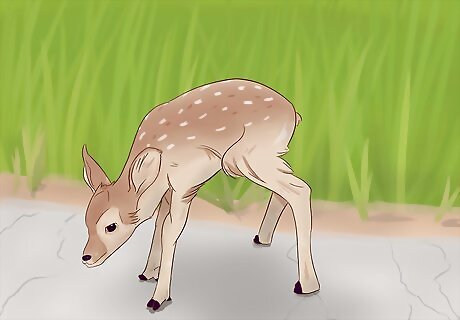
Recognize the signs of an abandoned fawn. If the fawn has accumulated fecal matter on its backside, then it is likely alone and without a mother to clean it. If the fawn is older and is exhibiting no flight response and staying out in the open, then it may be abandoned. You can also run your hands along the side of a fawn’s ear. It should feel soft; a dehydrated and abandoned fawn’s ear might feel rough to the touch.
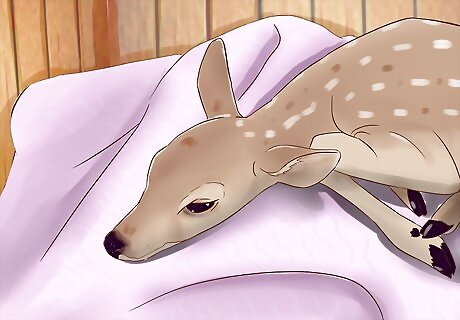
Provide immediate assistance to a fawn. In the period before a rehabber arrives, you may need to take care of an injured or abandoned fawn. Place the fawn inside a large crate lined with towels. Set a heating pad on low temperature in the back half of the crate. Try to bottle-feed the fawn a mixture of 50% water and 50% Gatorade or Pedialyte. If the fawn refuses to take any liquids, don’t force it. Do not give cow’s milk to a fawn, as this will upset its stomach.
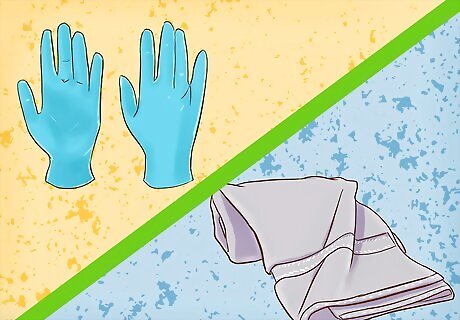
Minimize your scent. A mother deer will try to keep her fawn as scent-free as possible to provide protection from predators. If you handle a fawn, it is best if wear gloves. You can also wipe a towel all over the ground and then rub it across the fawn’s back. This will replace any trace of your scent.



















Comments
0 comment